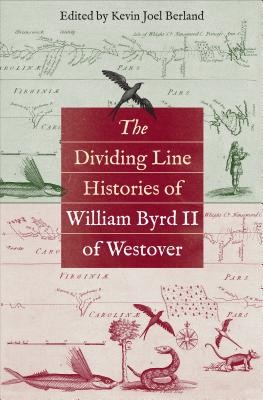
- We will send in 10–14 business days.
- Publisher: Omohundro Institute and University of North Carolina Press
- ISBN-10: 1469633450
- ISBN-13: 9781469633459
- Format: 16.3 x 24.1 x 3.6 cm, minkšti viršeliai
- Language: English
- SAVE -10% with code: EXTRA
The Dividing Line Histories of William Byrd II of Westover (e-book) (used book) | bookbook.eu
Reviews
Description
After his 1728 Virginia-North Carolina boundary expedition, Virginia planter and politician William Byrd II composed two very different accounts of his adventures. The Secret History of the Line was written for private circulation, offering tales of scandalous behavior and political misconduct, peppered with rakish humor and personal satire. The History of the Dividing Line, continually revised by Byrd for decades after the expedition, was intended for the London literary market, though not published in his lifetime. Collating all extant manuscripts, Kevin Joel Berland's landmark scholarly edition of these two histories provides wide-ranging historical and cultural contexts for both, helping to recreate the social and intellectual ethos of Byrd and his time.
Byrd enriched his narratives with material appropriated from earlier authors, many of whose works were in his library--the most extensive in the American colonies. Berland identifies for the first time many of Byrd's sources and raises the question: how reliable are histories that build silently upon antecedent texts and present borrowed material as firsthand testimony? In his analysis, Berland demonstrates the need for a new category to assess early modern history writing: the hybrid, accretional narrative.
EXTRA 10 % discount with code: EXTRA
The promotion ends in 23d.00:19:24
The discount code is valid when purchasing from 10 €. Discounts do not stack.
- Publisher: Omohundro Institute and University of North Carolina Press
- ISBN-10: 1469633450
- ISBN-13: 9781469633459
- Format: 16.3 x 24.1 x 3.6 cm, minkšti viršeliai
- Language: English English
After his 1728 Virginia-North Carolina boundary expedition, Virginia planter and politician William Byrd II composed two very different accounts of his adventures. The Secret History of the Line was written for private circulation, offering tales of scandalous behavior and political misconduct, peppered with rakish humor and personal satire. The History of the Dividing Line, continually revised by Byrd for decades after the expedition, was intended for the London literary market, though not published in his lifetime. Collating all extant manuscripts, Kevin Joel Berland's landmark scholarly edition of these two histories provides wide-ranging historical and cultural contexts for both, helping to recreate the social and intellectual ethos of Byrd and his time.
Byrd enriched his narratives with material appropriated from earlier authors, many of whose works were in his library--the most extensive in the American colonies. Berland identifies for the first time many of Byrd's sources and raises the question: how reliable are histories that build silently upon antecedent texts and present borrowed material as firsthand testimony? In his analysis, Berland demonstrates the need for a new category to assess early modern history writing: the hybrid, accretional narrative.


Reviews